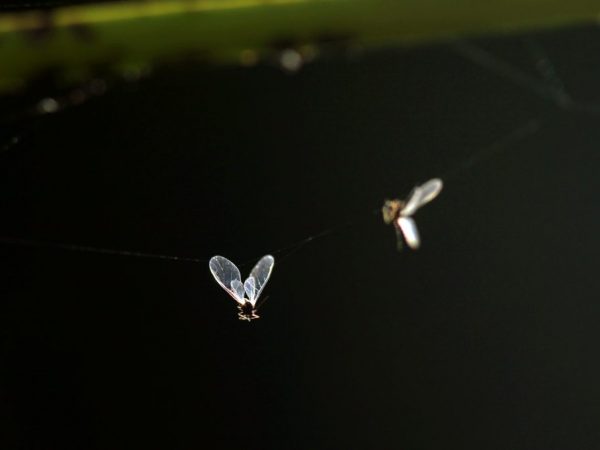Fighting gnats on cabbage
Small black midges that have settled on cabbage are called cruciferous flea beetles. These pests cause great harm to the plant, and subsequently death. To get rid of insects, various control methods are used.

Fighting gnats on cabbage
Description of the pest
These pests can be easily recognized by their appearance. The small size of the midges allows them to jump well. The dark color makes them stand out on the green leaves and head of the cabbage. In the warm season, they are especially active.
The real treat for cruciferous flea beetles is the young cabbage leaves. The injured vegetable is covered with many small holes. Subsequently, the plant slows down growth, begins to dry out and dies.
A large number of cabbage midges can destroy the entire crop in a couple of days. Fleas hibernate under a layer of fallen leaves and on the upper balls of the soil. If the affected leaves are not destroyed during harvest, they will spoil the sprouts again in the spring.
Top dressing with chemicals
If the cabbage is infected with a cruciferous flea, its leaves can be treated with various preparations. Chemicals will help to save the harvest. The most popular are presented in the table.
| Name | Description | Mode of application |
Bankcol | An effective drug. Differs in the possibility of use at high air temperatures. | Dilute 6 g per 10 liters of water. This volume is sufficient for processing 100 m². |
Lightning | Fast-acting long-acting agent. Has a wide range of indications. | Spray the whole plant in the garden. For 1 hectare, 1 - 1.5 liters of liquid are used. |
Actellic | A liquid with a broad spectrum of action. Used for the prevention and treatment of black cabbage midges and other pests | For 5 liters of water, you need to take 5 ml of the drug. Consumption of 3 liters for 5 - 6 hectares. They are used by spraying the soil under the plants. |
Initiative | Granular preparation containing diazinon. | On a plot of 10 m², 20 g of the substance is used. They are introduced when planting seedlings, after mixing with the soil. |
Decis Profi | Fast-acting drug. Does not wash off during precipitation. | Dilute 2 g in 30 liters of water. Use personal protective equipment when spraying. |
To increase the degree of protection, drugs should be used not only for the treatment of the affected areas, but also for prevention.
Folk remedies

Ash will help in pest control
Among the methods of dealing with the cruciferous flea, folk remedies are very popular, the use of which is safe for the plant and human health.
- Celandine. Sprinkle the cabbage with the powder prepared in advance from the dried medicinal plant.
- Wood ash and tobacco dust. Mix wood ash and tobacco dust in a 2: 1 ratio. Sprinkle this mixture on the crop after pretreatment with water.
- Fir oil. First you need to make an aqueous solution. Add 15 to 20 drops of oil to a bucket of water. Apply when watering plants.
- Vinegar 70%. With a weak solution in the ratio of 1 tablespoon vinegar to 10 liters of water, spray the cabbage and the soil under it. The acidic environment does not allow insects to reproduce.
- Chicken droppings. Should be applied as a top dressing for planted seedlings. The litter is diluted with water in a ratio of 0.5 kg per 10 liters of water.
- Bitter red pepper. An aqueous infusion of 1 liter of water at room temperature and 1 - 2 pods of red pepper, previously ground into powder. This mixture is infused for 2 to 4 hours. Add 30 g of soap to the finished solution. Treat affected plants in the garden.
- Dandelion leaves. Insist 70 g of finely chopped fresh dandelion leaves in 1 liter of water for about 2 hours. The culture is treated with the prepared liquid every 2 to 3 days.
- Garlic. You need to treat the soil and pests on the plant with a mixture of 1 chopped head of garlic and 2 liters of water. Insist 1 hour. Then the garden is sprayed.
- Tansy. Powder from a crushed medicinal plant is sprinkled with vegetables affected by cabbage midges. The procedure should be carried out several times.
- Naphthalene. Apply to the entire crop with the calculation of 50 g of the product per 10 m² of the plot. ... After a few days, the procedure is repeated.
Proportions should not be neglected. Correct application of drugs improves the effect and gives the result faster.
Conclusion
You can save the crop from a cruciferous flea in any of the following ways. Timely control of the problem will help preserve the harvest.


